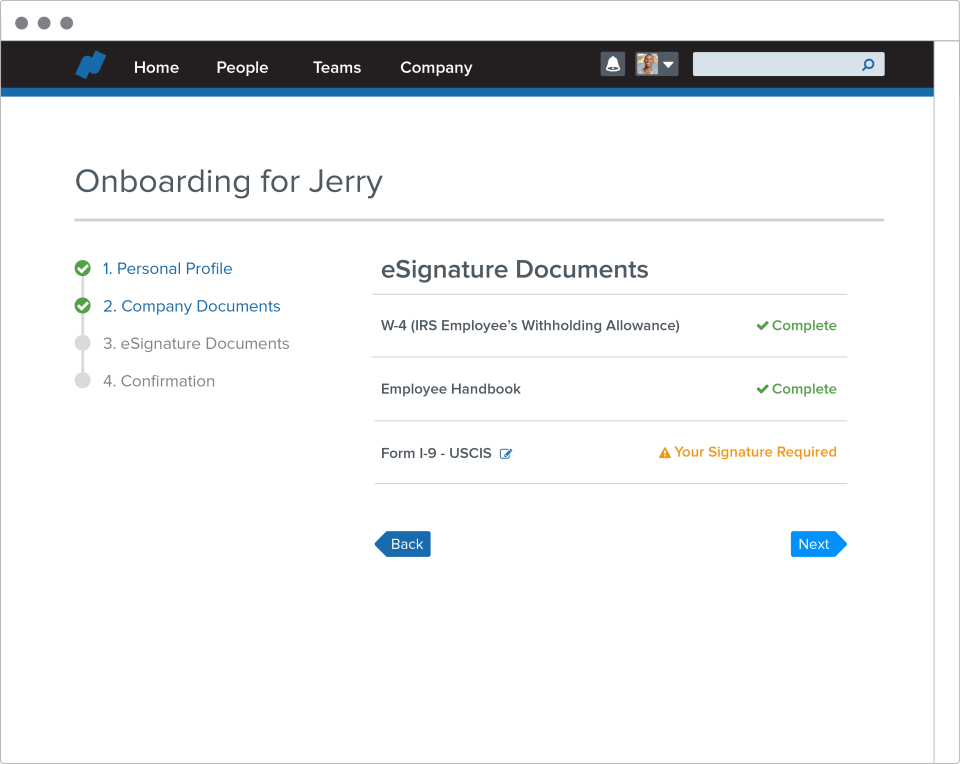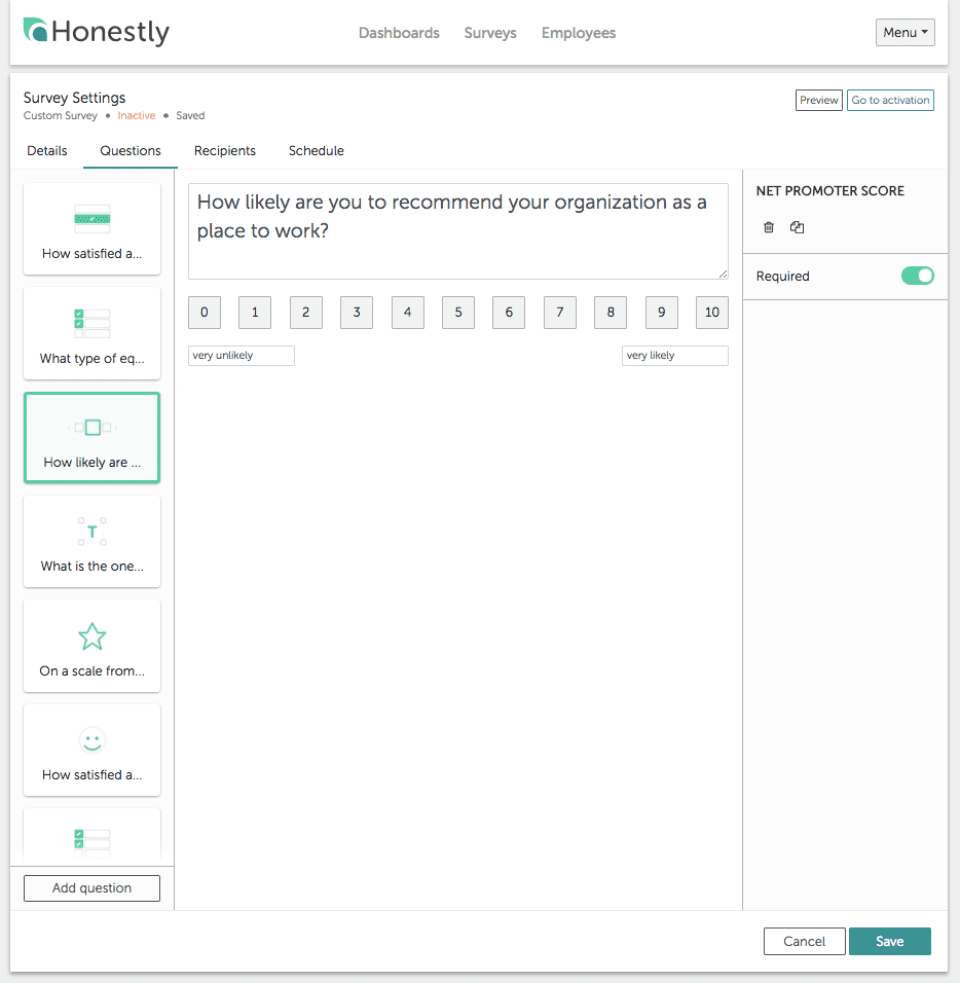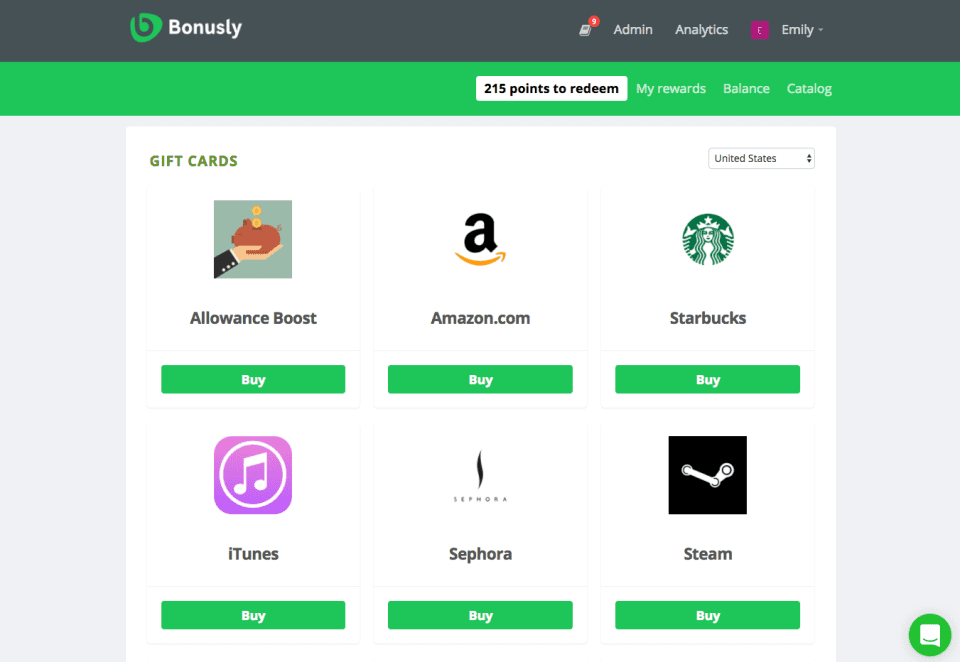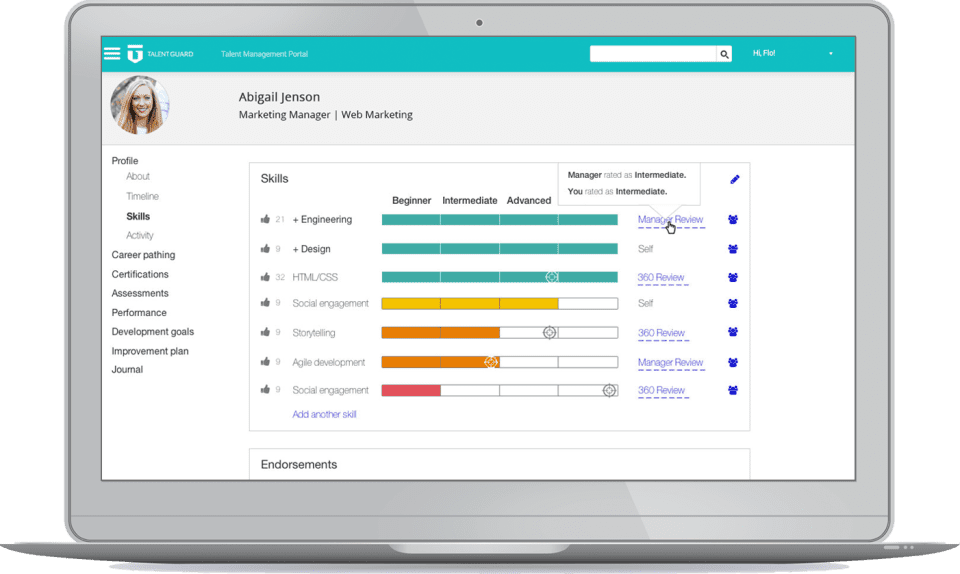According to a recent survey by Jobvite, 30% of new hires will leave a job within their first 90 days.
That means for every ten people you manage to find, recruit, and hire to your small business, three will be gone before the season even changes. You'll then have to spend an average of $4,000 and 24 days to replace each one of them.
Which is why it's so crucial that you nail those first 90 days with your new hire onboarding process:
Make it dull, stressful, or defined by mountains of paperwork, and you'll have a worker looking to make their exit as soon as another opportunity presents itself.
Make it memorable, engaging, and part of a great overall employee experience, and you'll have a worker who's highly committed to your organization.

If you're part of the 50% of small businesses that don't have a structured onboarding process, it's past time to make a change and reap the rewards.
Small businesses that create a structured plan for their new hire's first 90 days can cut employee attrition rates byas much as 60%.
So, let's get planning. We'll detail everything that should happen during your new hire's first 90 days to ensure they become a long-standing successful employee. We'll end with the only new hire onboarding checklist you'll ever need.
The week before: Introductions and knocking out paperwork early
If you wait until a new hire's first day to start the onboarding process, you've already made a mistake.
Put yourself in your new hire's shoes. They're entering a new office they don't know, to do a new job they don't know, with a bunch of new people they don't know. It's a nerve-wracking situation, but you have the power before that important first day to make it less so.
A week before their start date, you should email your new hire to:
Welcome them to the company
Give them a schedule for their first week
Make yourself available to answer any questions
A little guidance before your new hire arrives can go a long way to setting them up for success.
You should also assign your new hire a mentor from within your organization—ideally a more senior employee in a similar role—and have them introduce themselves through a phone call or email. Not only can mentors give your new hire a friendly face to find on their first day, but studies have shown that mentors provide numerous business benefits and are highly sought after by Gen Z.
Finally, to maximize your new hire's time during their first week, have them complete all of that necessary paperwork now. Adding your new hire to an onboarding software system will allow you to assign them their I-9, W-4, and any other forms for them to fill out digitally before their first day.

New hire self-service onboarding in Namely (Source)
Your new hire won't have to worry about losing something important such as their social security card at work, and you can spend more time on important things such as getting your new hire acclimated and up to speed. It's a win-win.
The day before: Create a welcoming workspace
How would you feel if the first time you saw your new desk or office, it was spotless, had everything you needed for your first week, and was also adorned with welcome gifts? It would probably leave quite the impression.
On the other hand, how would you feel if your employer didn't even bother to clean your new workspace when you got there? That would also leave quite the impression, but definitely not a good one.
So anyway, here's your des ... wait, where are you going? (
Ultimately, the saying holds true: First impressions really do matter. That's why the day before your new hire starts, you need to make an effort to give them a wow-factor workspace.
Here are some tips to make it happen:
Get rid of remnants from former employees. Nothing kills the mood quite like finding a leftover name tag or business card from the person who used to work in that space. Make sure your new hire arrives to a clean slate.
Equip them with everything they need. HR and IT should work together to ensure your new hire's workspace is ready to go with a computer, phone, office supplies, ID badge, company directory, etc. Don't leave it on your new hire to hunt things down.
Don't shirk on swag. Raid that storage closet for anything you can find with a company logo. T-shirts, coffee mugs, pens, koozies—if you can hold it in your hand, give it to your new hire as a gift. Bonus points if you take the time to get swag personalized.
Include welcome message from co-workers. A few encouraging messages from co-workers can make your new hire's first day that much more special.
Flowers are a great workspace booster too, as is a guide to the city if your new hire is moving from far away. If you can tie your new hire's workspace to your culture or the product or service you offer, even better. For example, if your company makes outdoor apparel, you could include a list of hiking trails in the area. Get creative.
Day 1: Make it memorable, not monotonous
If there's one phase of your onboarding process that you shouldn't worry about overplanning, it's your employee's first day. This is your chance to make an enduring impact, so scrutinize it as much as possible. You want your new hire walking out the front door thinking, “I love my new job."
For starters, make sure someone—preferably your new hire's manager or mentor—is at the front door to greet them when they come in (you'd be surprised how many companies leave their new hire waiting). Let them set down their stuff, get them a cup of coffee or a snack, and give them a tour of the office.
As they're getting set up at their desk, send out a company-wide announcement email that includes the new hire's role, who they're reporting to, and a short bio. Then take them out to lunch with some of their new colleagues, and pay for it.
But if you really want to make an impact, learn from some of these examples:
3 companies that are doing something different for their employee's first day
At Everlane, new hires are given $100 on their first day to go out and spend immediately on something they love. There are no limits on what they can buy, but there is a catch: They have to share how they spent the money with their co-workers the following week.
At ATLETO, new hires pick their favorite sport and then play it with some of their co-workers and company leaders. In 2016, ATLETO's new CTO took everyone paddle boarding.
At TINYpulse, the end of a new hire's first day is celebrated by popping a bottle of champagne.
Hopefully you're seeing the pattern: Your focus for a new hire's first day is to make it memorable. That means no paperwork (which they should've completed ahead of time anyway), and absolutely no training. There will be plenty of time for that in the weeks to come.
Days 2-10: Training, shadowing, goal setting, and initial feedback
With that important first day out of the way, it's time to get to work. Now is when you can schedule initial training sessions on important tools and processes, sit down with your new hire to go over their role and responsibilities in more detail, and set aside time to explain your company's history, culture, and values.
That last bit can be overlooked but is especially important to any successful new hire onboarding process. Why? Because if you look at new hires who fail at their job, only 11% do so because they don't have the necessary hard skills for the role.
Much more often, new hires will fail because of a cultural disconnect in motivation, temperament, or communication.
A meta-analysis of 172 studies adds that employees who are a good cultural fit are often happier, more productive, and stay longer at the company. The big takeaway: Don't assume your new hire will understand and fit in to your unique culture immediately—teach it to them.
Don't just drown your new hire in training though. Here are some other things you should do during this time:
Have your new hire shadow workers in different departments. This will help them understand not only how your entire company operates, but also how their role fits in the big picture. This can also encourage future cross-departmental collaboration.
Set and communicate short-term and long-term goals. Outside of one-on-one time with their manager, new hires say having an outline of performance goals is the most important thing for them during onboarding. A good short-term goal could be something as simple as meeting ten new people in the office, while a good long-term goal could be completing three projects by the end of the year. Whatever it is, be specific.
Send a survey to gather initial feedback on your onboarding process so far. Maybe you're going too fast. Maybe your new hire is still confused about certain rules or policies. You'll never know unless you give your new hire the opportunity to tell you. This information can also help you improve your onboarding process for the next person.
A number of onboarding software platforms have new hire survey functionality built in. You can also invest in an employee engagement tool with a pulse survey feature to periodically receive and analyze feedback from your entire workforce.

Designing a pulse survey in Honestly (Source)
Days 11-30: More training, check-ins, and the beginning of normalcy
By the end of month one, your new hire should have enough of a grasp of the company and its role to start being incorporated in the fold of a typical day-to-day. Even if they don't contribute much, your new hire should start attending regular team meetings to begin to build a routine.
With the basics out of the way, and hopefully enough built-up trust to feel certain your new hire won't run off with company secrets to a competitor, you can also begin to pull back the curtain on the specifics of your company's strategy and position in the marketplace.
Don't throw this training in a PowerPoint or an eLearning course; it should be led by a manager or business leader in person and allow your new hire to ask a ton of questions.
Lastly, if you haven't done so already, you should schedule weekly check-ins with both the new hire's manager and their mentor to provide support (they may feel more comfortable revealing some struggles to a coworker instead of their manager). One study found that the amount of support a new hire received during onboarding has significant implications on role clarity and job satisfaction.
Manager one-on-ones should continue after onboarding, but you can drop the mentor check-ins after 90 days.
Days 31-60: Collaboration, recognition, and career planning
It's time for your new hire to start contributing—albeit in a limited capacity. Remember, it can take anywhere from 12 to 15 months for a new hire to become a fully productive employee, so now is not the time to cut them loose entirely.
In month two, you should assign your new hire their first big project. They can collaborate on an existing project with someone, or tackle a new one with help from their mentor or another coworker, but either way, they should have someone supervising and checking their work periodically.
If they do well, be sure to recognize their achievement. A 2017 survey found that employees who were recognized for their performance in the past two months have higher job satisfaction and engagement than those who were never recognized at all.
If you're looking for a more engaging, timely, and scalable way than email or all-company meetings to recognize workers, look into an employee recognition tool. These social media-like systems allow co-workers to get involved in the action to heap their own praise and even allow for gamification to encourage participation.

Employees can redeem points earned from praise for real rewards in Bonusly (Source)
It's also time to start thinking long-term. With 72% of millennials—the largest generation in the U.S. workforce—valuing opportunities for career advancement, managers should sit down with their new hire now to discuss their career plans and figure out a potential trajectory for them within the organization. Plans can change, of course, but just having the discussion can help tremendously with new hire engagement.
Managers can log all of these details in a succession planning software system to keep your new hire in mind for future promotions or to fill a need down the line should a vacancy come open that's related to their plan.

Succession planning in TalentGuard (Source)
Days 61-90: Independence, performance reviews, and final feedback
If everything went well with your new hire's first collaborative project in month two, you can finally take the training wheels off in month three and assign them their first solo project. Just remember to go over goals and communicate what defines project success clearly—you don't want to leave any ambiguity.
At the end of the 90 days, conduct your new hire's first performance review. This is a time to go over what went well during the onboarding period, what didn't, and which areas your new hire needs to focus on for improvement moving forward. It's a two-way conversation—your new hire should also give final feedback on what they think works and doesn't with your onboarding process.
And if it's really not working out? Don't hesitate to let your new hire go. The cost to replace them may be upwards of $4,000, but that pales in comparison to the $50,000 cost of a bad hire.
The only new hire onboarding checklist you'll ever need
Did you get all of that? If not, we've got you covered.
Below, we have the only new hire onboarding checklist you'll ever need. Download it now and refer to it for every new hire or, better yet, copy this checklist into an onboarding or project management system so you can customize it to your organization's specific needs and apply it consistently across teams and time.

And if you're looking for even more new hire onboarding resources, we've got you covered here too. Learn more onboarding best practices and tips from the articles below or over at our talent management blog: